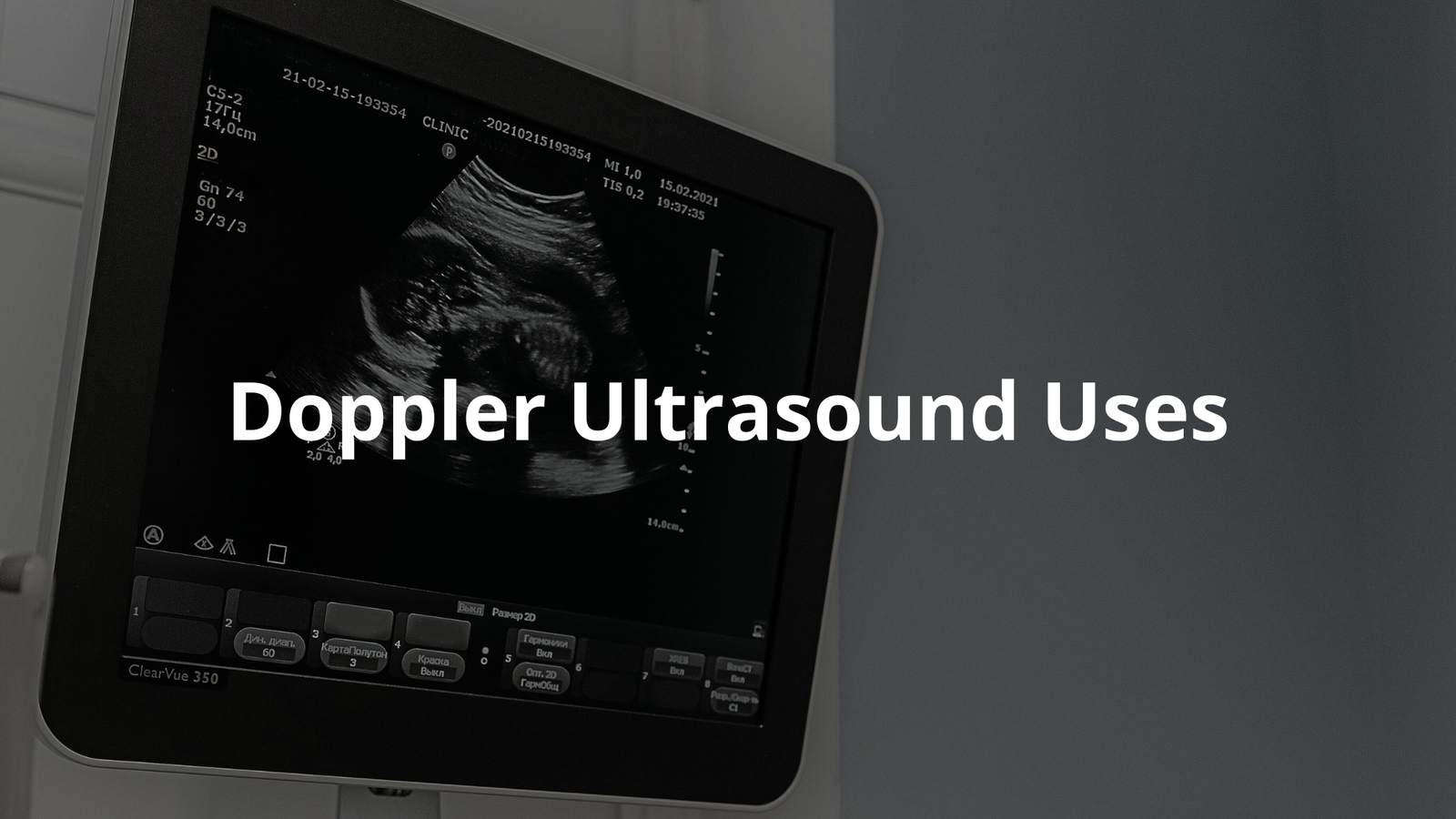Learn about how Doppler ultrasound uses sound waves to check blood flow and help diagnose health issues.
Doppler ultrasound uses sound waves to create images and listen to blood moving in your body. It’s a neat way for doctors to see what’s happening inside your blood vessels without any pain. This method is super important because it helps doctors figure out if you have conditions like heart disease or blood clots. If you want to know how it works or why it’s used, keep reading!
Key Takeaway
- Doppler ultrasound checks how blood flows through your body.
- It helps doctors find blood clots and other health problems.
- The test is safe and doesn’t hurt at all.
Understanding Doppler Ultrasound
Doppler ultrasound is a special medical test that uses high-frequency sound waves to look at blood vessels in your arms and legs. It’s quite interesting how it works(1). The sound waves bounce back from the blood cells and create images that show how blood is flowing in your body.
It’s like looking at a river and seeing how the water moves around rocks and bends. This helps doctors see if there are any problems, like blood clots or blockages in major arteries.
One day, there was a little excitement in the hospital where my aunt was having this test. She was a bit nervous, but the doctor reassured her that it was easy and painless. She lay down on an exam table, which was covered with a blanket, except for her arm. The nurse applied some ultrasound gel on her skin. The gel looked like a little clear jelly, and it helps the sound waves go through the skin.
It was fascinating to watch as the nurse moved the handheld scanner, called a transducer, over the gelled area. My aunt could even hear the sound of her blood flowing! It’s a strange but comforting sound, like a soft whooshing. The whole process usually takes about 30 minutes to an hour, and it’s so low risk. There are no needles involved, and it doesn’t hurt at all. I think that makes it a great option for patients of all ages.
Uses of Doppler Ultrasound

Doppler ultrasound has many important uses in the medical field(2). Here are some key points:
1. Checking Blood Flow
One of the main uses of Doppler ultrasound is to check how blood flows through arteries and veins. Doctors can use it to see if there’s a blockage. For example, if someone has high cholesterol, it can build up and narrow arteries, like how a pipe can get clogged with dirt. This test helps catch those problems early, which is super important for heart health.
I remember hearing a story about a man who felt pain in his chest. His doctor ordered a Doppler ultrasound to check his blood flow. After the test, they found that he had a blockage in one of his arteries. They were able to help him before it got worse. This type of test is essential for preventing serious heart issues and keeping people healthy.
2. Finding Blood Clots
Doppler ultrasound is great for spotting blood clots, especially in the legs. A condition like Deep Vein Thrombosis (DVT) can form clots in veins, and those clots can be dangerous if they travel to the lungs. A friend of mine once needed this test after he complained about pain in his leg.
The doctor explained that it was the best way to check for a blood clot. Thankfully, the test showed that he was fine, but it really helped ease his worries.
When doctors suspect DVT, they might order a Doppler ultrasound right away. This non-invasive test can identify clots quickly, allowing doctors to treat them before they cause serious problems. It’s comforting to know that such a simple test can help save lives.
3. Monitoring Pregnant Women
Doppler ultrasound is also crucial for pregnant women. It can check the baby’s heart rate and see how blood flows through the umbilical cord. This information helps doctors make sure that the baby is healthy and growing well.
I once attended a prenatal appointment with my cousin, who was expecting her first child. The doctor used the Doppler ultrasound to monitor her baby’s heart rate. It was amazing to hear that little heartbeat! The doctor explained that this test is vital for assessing the baby’s health and checking for any risks during pregnancy.
Doppler ultrasound helps doctors ensure that everything is going smoothly. By monitoring blood flow in the umbilical cord, they can detect any potential issues early on. This is a key part of prenatal care, and it helps parents feel reassured about their baby’s wellbeing.
Doppler ultrasound is a fascinating tool in modern medicine. It helps detect blood flow problems and offers peace of mind to patients and their families.
How the Test Works
Getting a Doppler ultrasound is pretty simple. Here’s what usually happens:
- Getting Ready: You lie down on an exam table. They might cover you with a blanket, except for the area they’re going to check.
- Ultrasound Gel: The nurse applies a small amount of ultrasound gel on your skin. It feels a bit cool and helps the sound waves travel better.
- Scanning: The doctor uses a handheld scanner called a transducer. They move it over the gelled area, and you might hear the sound of your blood flowing! That’s how they know the blood is moving.
- Time: The whole test usually takes about 30 minutes to an hour. It’s quick and doesn’t hurt!
Safety and Side Effects
Doppler ultrasound is a low-risk medical test that doesn’t cause any known side effects. That’s one of the best parts of this procedure! It’s quite a relief to think about. There are no needles or injections involved. Just sound waves going into your body. This makes it a perfect choice for people of all ages, including pregnant women.
One day, my friend Lucy had to get a Doppler ultrasound done. She was worried about the safety of the test, especially since she was pregnant. But when she learned there were no side effects or pain, she felt much better. The doctor explained that because it uses sound waves, it’s completely safe.
- No Needles: Patients don’t have to worry about painful shots.
- Safe for Everyone: It’s suitable for kids and adults alike.
- Quick Process: The test usually takes only 30 minutes to an hour.
So, if anyone is ever nervous about getting a Doppler ultrasound, they can rest easy knowing it’s an easy, low-risk test that provides helpful information about their health without causing any harm.
Why is Doppler Ultrasound Helpful?
Doppler ultrasound is a helpful tool for doctors. This type of ultrasound can create high-quality images of blood vessels, showing how blood flows in real-time. It’s like having a window into the body, helping doctors see what’s going on right then and there. They can use this information to diagnose problems like arterial disease or check for venous insufficiency.
For example, if someone feels pain in their legs, a doctor might order a Doppler ultrasound to see if there’s a problem with blood flow. It’s pretty amazing how this test can help doctors make better decisions about treatment.
One time, my uncle had a Doppler ultrasound because he was experiencing swelling in his leg. The doctor explained that the test could help find out if there were any clots or blockages. After the test, they found that he had some narrowed arteries, but because they caught it early, they were able to make a treatment plan quickly.
- Real-Time Images: Doctors can see how blood flows right away.
- Helps Diagnose Conditions: It can identify issues like arterial disease and blood clots.
- Informs Treatment Decisions: The information gathered helps doctors decide on the best treatment.
Doppler ultrasound is a fascinating tool that makes a real difference in patient care. It helps keep people healthy by detecting problems early, ensuring that they can get the right treatment when they need it.
Advancements in Technology
Recently, there have been some really exciting changes in Doppler technology. It’s amazing how fast things can improve. Now, doctors have access to handheld devices that allow them to do quick checks right in their offices. Imagine walking into a doctor’s office and getting immediate results! It’s like having a mini ultrasound machine right there, and it makes things so much easier for patients who might be anxious about waiting for results.
I remember visiting a clinic with my friend Sarah. She was feeling a bit dizzy and had some concerns about her blood flow. The doctor used one of those new handheld devices. It was fascinating to see how they could check her blood flow in just a few minutes. The doctor moved the scanner over her wrist and was able to hear the blood flowing.
The results were displayed on a small screen in real-time. It was almost magical to witness the technology at work!
- Quick Results: Patients don’t have to wait long for answers.
- Convenience: These devices can be used in various settings, including clinics and even at home.
- User-Friendly: Doctors find them easy to use, and they provide accurate readings.
These advancements might lead to better diagnosis and treatment options. I think it’s exciting to think about how technology continues to make the healthcare experience better for everyone. The future looks bright for Doppler ultrasound, and it’s all about making healthcare more accessible and efficient. So, if someone ever needs a Doppler test, they can feel reassured knowing that technology is on their side!
Wrap Up
Doppler ultrasound is a vital tool in healthcare. It helps doctors check blood flow, find clots, and monitor pregnancy. Using sound waves means it’s safe and low risk. So, if you’re ever asked to have one, remember it’s just a simple test to help keep you healthy!
In short, the next time someone mentions a Doppler ultrasound, know that it’s all about helping doctors see how well your blood is flowing. It’s like a superhero for your health!
FAQ
How do doctors use Doppler ultrasound to check blood flow?
Doctors use Doppler ultrasound to examine blood flow in arteries and veins. The transducer sends sound waves into the body that bounce off red blood cells, creating an image of blood flowing through vessels. This helps diagnose vascular disease by showing the speed and direction of blood moving through the circulatory system.
What happens during a Doppler ultrasound exam?
During the ultrasound exam, you’ll lie on an exam table while a healthcare provider applies ultrasound gel to your skin. They’ll move a transducer over the area being examined. The ultrasound waves create an image showing blood vessels and blood flow. You typically don’t need to avoid food or drink beforehand.
What are the different types of Doppler ultrasound?
The main types of Doppler include colour Doppler, power Doppler, and spectral Doppler. Colour Doppler shows blood flowing in different colours to indicate direction. Power Doppler helps detect a small amount of blood flow in soft tissues. Spectral Doppler uses change in pitch to measure flow studies.
What conditions can Doppler ultrasonography help diagnose?
Doppler sonography helps diagnose deep vein thrombosis, blood clots, venous insufficiency, heart disease, and peripheral vascular conditions. Healthcare professionals use it to check for narrowed arteries, abnormal blood flow, and artery disease, particularly in the carotid artery and major arteries.
Is Doppler ultrasound scanning safe for medical imaging?
Doppler ultrasound is a low-risk diagnostic ultrasound that doesn’t use ionising radiation. The ultrasound examination provides real-time high-quality images of internal organs and tissues in the body with minimal side effects. Healthcare providers consider it one of the safest medical imaging tools.
When might your doctor order a vascular ultrasound?
Your doctor may order ultrasound scans to examine blood vessels in your arms and legs if you show signs of poor circulation. This ultrasound imaging helps evaluate blood flow in arteries or veins and can detect superficial thrombophlebitis or arterial disease.
References
- https://envisionmi.com.au/us-doppler/
- https://www.healthywa.wa.gov.au/Articles/A_E/Doppler-ultrasound




